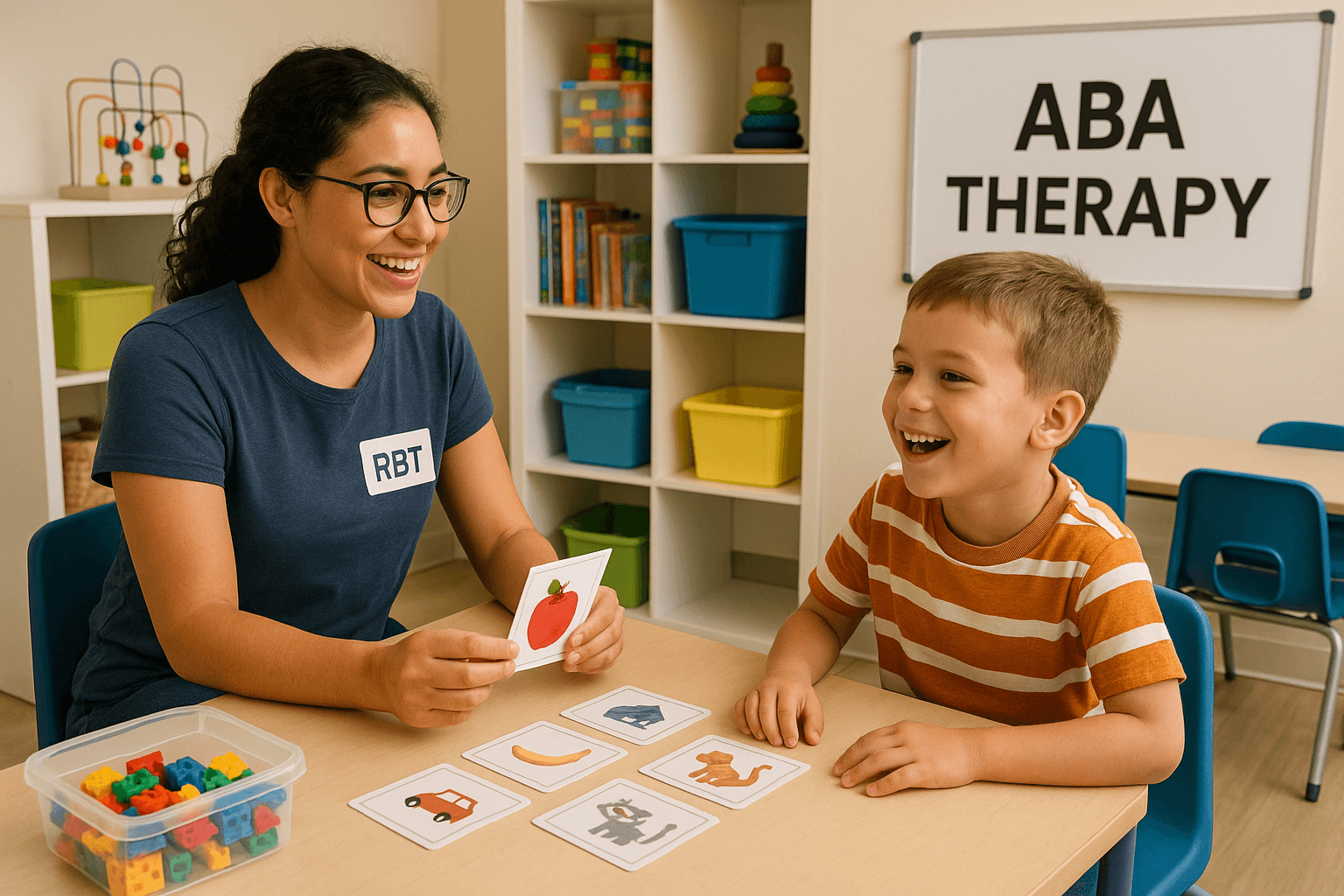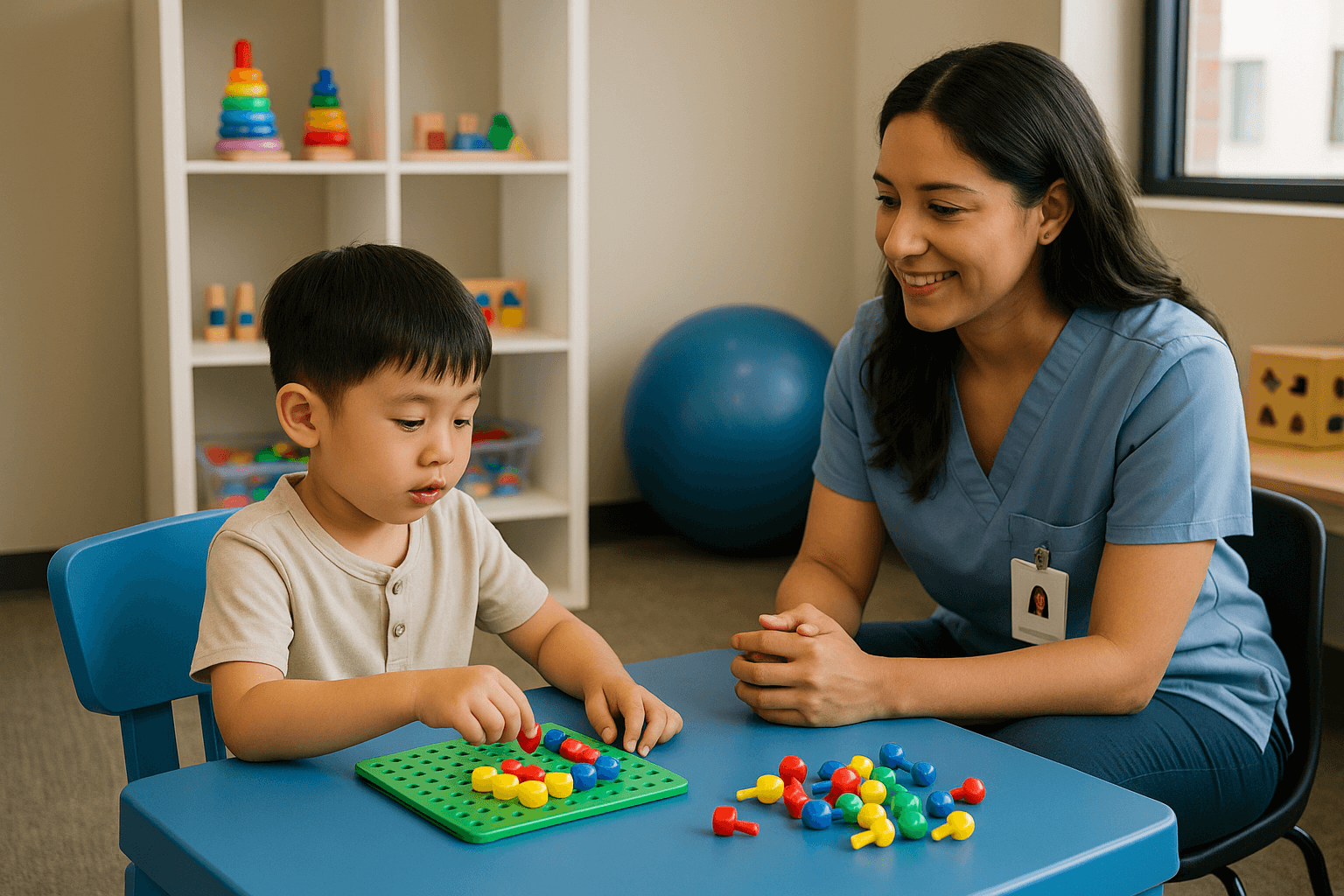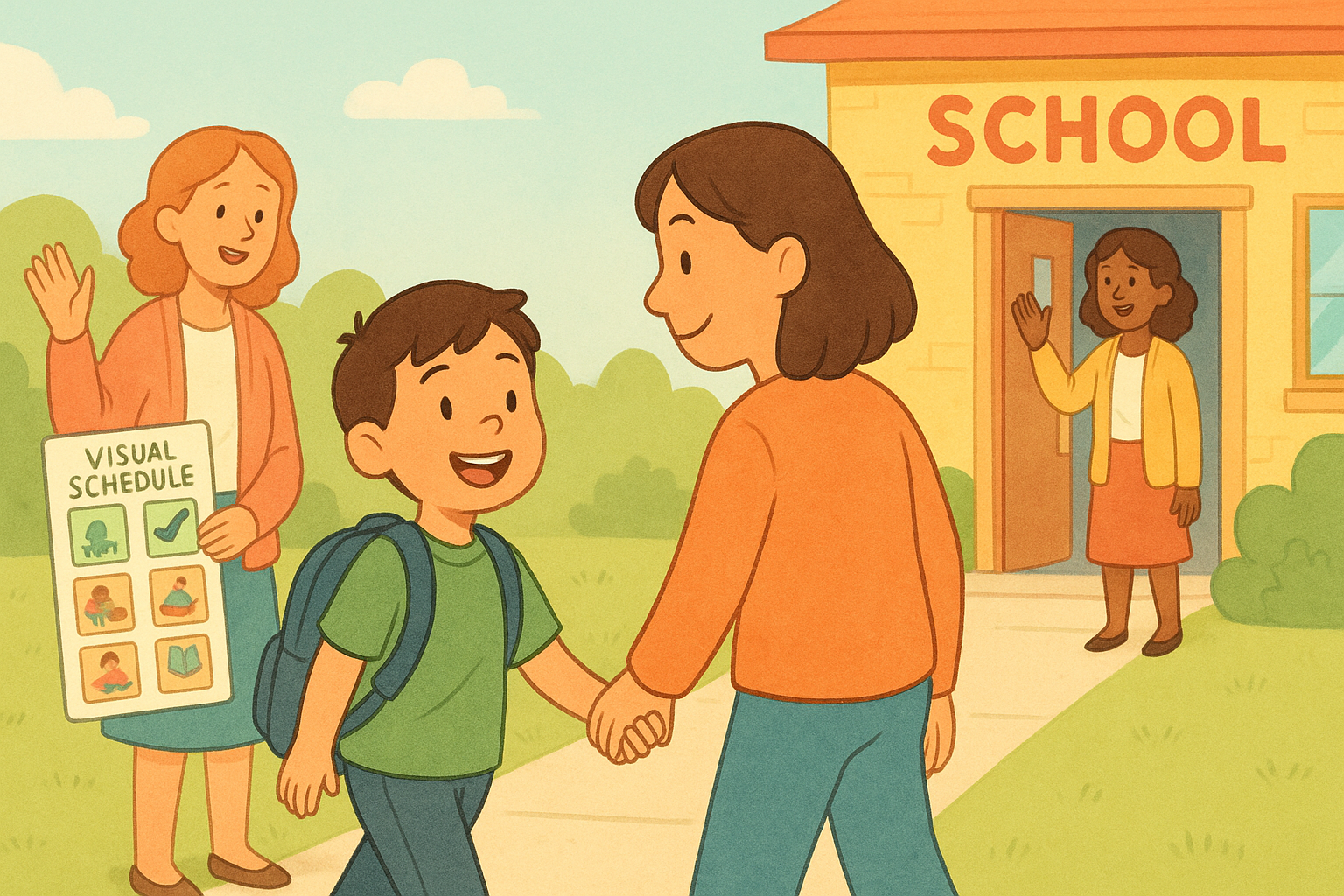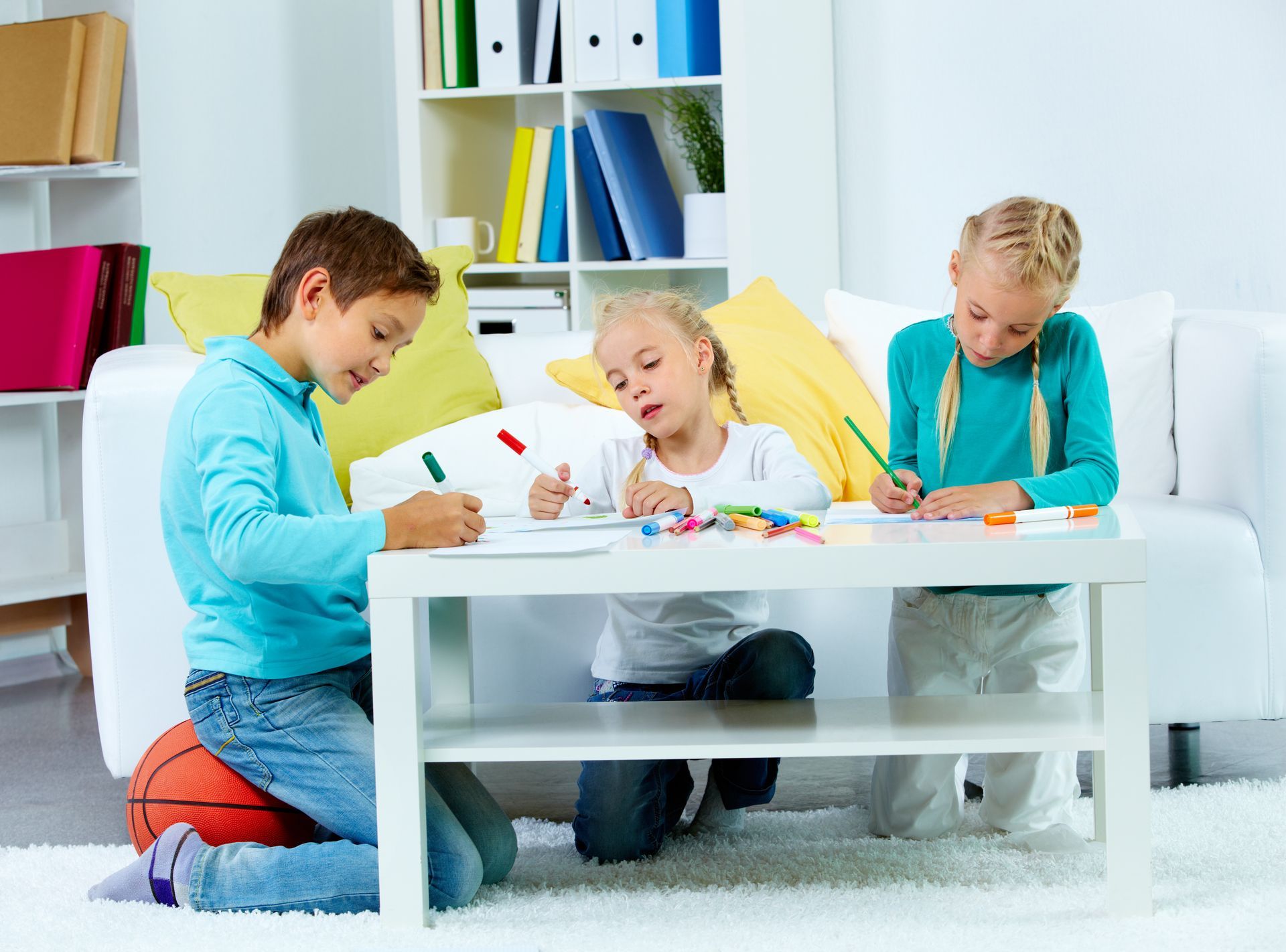Understanding Sensory Sensitivities: ABA Strategies for Parents
Sensory sensitivities are common among children on the autism spectrum. For parents, understanding these sensitivities and knowing how to manage them can be challenging yet essential for the child’s development and well-being. Applied Behavior Analysis (ABA) strategies provide parents with effective tools and techniques to help their children navigate the world with less discomfort and more success.
This comprehensive guide explores sensory sensitivities, how they manifest in children, and actionable ABA strategies for parents to address these challenges. The goal is to help parents support their children in managing sensory sensitivities while fostering their overall development.
What Are Sensory Sensitivities?
Sensory sensitivities refer to an exaggerated response to certain stimuli that children may experience through any of their five senses: sight, sound, touch, taste, or smell. While every child experiences stimuli differently, those with autism spectrum disorder (ASD) often have heightened or diminished sensory sensitivities that can greatly affect their daily lives.
Types of Sensory Sensitivities
Hyper-Sensitivity: This occurs when children are overly responsive to sensory stimuli. For example, a child who is hyper-sensitive to sound may cover their ears when hearing loud noises, or a child who is sensitive to textures might refuse to wear certain types of clothing.
Hypo-Sensitivity: On the other hand, hypo-sensitivity refers to an under-response to sensory stimuli. These children might not react to pain as expected, seek out strong sensations (like spinning or crashing), or require additional sensory input to feel regulated.
Both hyper-sensitivity and hypo-sensitivity can present in varying degrees, often making it difficult for parents to identify triggers and understand the behaviors that result.
The Link Between Sensory Processing and Autism
Children with autism often exhibit sensory processing differences. This means that their brains may handle incoming sensory information in a way that is different from neurotypical children. Sensory processing challenges can affect their ability to engage in everyday activities and impact their emotional and social responses.
For example, a child with sensory sensitivities might find it difficult to play in a busy playground, attend a loud birthday party, or even tolerate the feeling of certain foods in their mouth.
Understanding the role of sensory processing in your child's experience of the world is key to providing the right support. This understanding can help parents foster an environment where their child feels safe, understood, and capable of growing.
How Sensory Sensitivities Impact Daily Life
When children experience heightened or reduced responses to sensory input, everyday tasks such as getting dressed, eating, or going to school can become overwhelming. As a parent, recognizing the impact of sensory sensitivities is crucial to creating strategies that help your child thrive.
Common Signs of Sensory Sensitivities
- Aversion to touch or textures: A child may refuse to wear certain fabrics or dislike activities that involve getting their hands dirty, such as finger painting.
- Overwhelmed by sounds: Noises that seem ordinary to others, such as the vacuum cleaner or a car horn, may cause distress in a child with sound sensitivities.
- Extreme reactions to smells or tastes: Some children may refuse to eat foods with strong smells or textures, limiting their diet.
- Avoidance of bright lights or patterns: Sensitivity to visual stimuli may cause a child to avoid bright lights or environments with busy patterns.
- Seeking out intense sensory input: Conversely, children with hypo-sensitivity may actively seek out sensations, such as swinging, spinning, or jumping repetitively, to regulate their sensory needs.
Sensory Sensitivities in Public Spaces
Public spaces often present sensory challenges. Grocery stores, schools, playgrounds, and family gatherings are just a few environments where sensory input may be overwhelming for a child with ASD. The lights, sounds, crowds, and even smells can become too much, leading to anxiety, meltdowns, or avoidance behaviors.
Parents may feel unsure about how to help their children navigate these spaces, but with ABA strategies, there are ways to make these environments more manageable and even enjoyable.
ABA Strategies for Managing Sensory Sensitivities
Applied Behavior Analysis (ABA) therapy is widely recognized as an effective approach for children with autism. ABA focuses on using positive reinforcement to encourage desirable behaviors while minimizing behaviors that interfere with learning and daily life.
When it comes to sensory sensitivities, ABA strategies can be tailored to help children manage their responses to overwhelming stimuli.
Desensitization Techniques
One ABA strategy for addressing sensory sensitivities is gradual desensitization. This technique involves slowly introducing a child to a stimulus they find uncomfortable or overwhelming, starting with a version that is less intense and gradually increasing exposure. The goal is to help the child become more tolerant of the stimulus over time.
How to Implement Desensitization:
- Identify Triggers: First, observe your child and make a list of specific sensory triggers, such as loud noises, certain textures, or strong smells.
- Start Small: Begin by exposing your child to a less intense version of the stimulus. For example, if your child is sensitive to sound, you might start with low-volume background noise.
- Use Positive Reinforcement: Each time your child successfully engages with the stimulus, even for a short period, offer praise or a small reward to reinforce the positive behavior.
- Increase Gradually: Over time, gradually increase the intensity or duration of the stimulus. Be patient and proceed at a pace that suits your child's comfort level.
Sensory Diets
A sensory diet is a personalized plan that incorporates activities aimed at providing the sensory input a child needs to stay focused and calm. Sensory diets are designed by ABA therapists in collaboration with occupational therapists and are tailored to each child's specific sensory needs.
Components of a Sensory Diet:
- Heavy Work: Activities that involve pushing, pulling, or lifting help children with hypo-sensitivity by providing the sensory input they need. This can include tasks like carrying a heavy backpack, stacking blocks, or jumping on a trampoline.
- Calming Sensory Input: For children with hyper-sensitivity, calming activities can help them regulate their sensory overload. These might include swinging, using a weighted blanket, or playing with sensory bins filled with sand, rice, or water beads.
- Sensory Breaks: Incorporating regular sensory breaks throughout the day can help prevent meltdowns. During these breaks, allow your child to engage in a preferred sensory activity, such as squeezing a stress ball or listening to calming music.
Creating a Sensory-Friendly Environment
Modifying your child's environment can reduce sensory triggers and make daily life more comfortable. ABA therapists often work with parents to create sensory-friendly spaces at home, in the classroom, and in public settings.
Strategies for a Sensory-Friendly Environment:
- Minimize Clutter: A cluttered environment can be visually overwhelming for a child with sensory sensitivities. Keeping spaces tidy and free of excess items can help reduce visual overload.
- Control Lighting: Use soft, natural lighting whenever possible, and avoid harsh fluorescent lights, which can be distressing for some children. Dimming the lights or using blackout curtains can also create a more soothing atmosphere.
- Use Noise-Reducing Tools: If your child is sensitive to noise, consider using noise-canceling headphones or white noise machines to create a quieter environment.
- Designate a Calm Space: Set up a designated "calm corner" where your child can retreat when they feel overwhelmed. This space should include sensory-friendly items, such as a weighted blanket, soft pillows, and fidget toys, to help your child self-soothe.
Teaching Coping Strategies
ABA therapy also focuses on teaching children practical coping strategies they can use when they encounter overwhelming stimuli. These strategies help children gain a sense of control over their environment and their emotional responses.
Coping Techniques:
- Deep Breathing: Teach your child to take slow, deep breaths when they feel overwhelmed. You can practice deep breathing together by pretending to blow out candles or blow up a balloon.
- Using Visual Supports: Visual supports, such as a picture schedule or emotion cards, can help children communicate their needs when they are feeling overstimulated.
- Modeling Calm Behavior: As a parent, modeling calm behavior in stressful situations can show your child how to manage their emotions. Use a calm tone of voice and slow movements to help your child feel grounded.
- Creating a Sensory Toolbox: Provide your child with a sensory toolbox filled with items that help them self-regulate. This could include fidget toys, noise-canceling headphones, or a favorite stuffed animal. Encourage your child to use these items when they start to feel overwhelmed.
Developing Self-Advocacy Skills
As children grow older, it's important to teach them how to advocate for their own sensory needs. ABA therapists can work with children to develop self-advocacy skills, which empower them to communicate their needs to others in a clear and effective way.
Steps for Teaching Self-Advocacy:
- Identify Sensory Triggers: Help your child recognize what triggers their sensory sensitivities. For example, if your child is sensitive to loud noises, they should be able to identify situations where this might become a problem.
- Teach Communication Strategies: Encourage your child to communicate their sensory needs, whether it's by using words, gestures, or visual aids. For instance, they can learn to say "It's too loud here, can I go somewhere quieter?"
- Role-Play Scenarios: Practice self-advocacy with your child by role-playing different scenarios. For example, pretend you are at a crowded birthday party, and ask your child to communicate how they feel and what they need to feel more comfortable.
Using ABA Data Collection to Monitor Progress
One of the strengths of ABA therapy is its emphasis on data collection to track progress. When using ABA strategies to manage sensory sensitivities, keeping records of your child's responses to various stimuli and interventions can help you and your therapist refine your approach.
Data Collection Techniques:
- Track Behaviors: Keep a log of your child's behaviors, noting any patterns related to sensory sensitivities. This could include the time of day, environment, and specific triggers.
- Monitor Progress: Over time, track how your child’s tolerance to certain stimuli improves. For example, after several weeks of using desensitization techniques, your child may become more comfortable with certain textures or sounds.
- Adjust Strategies: Based on the data you collect, you can adjust ABA strategies to better suit your child's evolving needs. This flexibility is key to ensuring continued progress.
Supporting Your Child Outside of Therapy
While ABA therapy is a powerful tool for addressing sensory sensitivities, much of your child's progress will happen outside of therapy sessions. As a parent, you play an essential role in reinforcing ABA strategies and providing a supportive environment.
Collaborating with Your Child's ABA Therapist
Your child's ABA therapist will create an individualized treatment plan to address sensory sensitivities, but it's important to collaborate closely with the therapist to ensure consistency at home. Make sure you're involved in the development of the treatment plan and ask for guidance on how to implement ABA strategies in daily life.
Questions to Ask Your ABA Therapist:
- What are my child’s specific sensory triggers?
- How can I use ABA strategies at home to support my child’s sensory needs?
- What are some signs that my child is making progress?
- Are there any specific activities or environments I should avoid?
Incorporating ABA Strategies into Daily Routines
Consistency is key to ABA success, so try to incorporate ABA strategies into your child's daily routines. For example, if you're using desensitization techniques to address sensitivity to certain textures, make sure you're practicing during meals, playtime, and other activities.
Examples of Routine Integration:
- During mealtime, introduce small amounts of foods with different textures while using positive reinforcement.
- At bedtime, incorporate calming sensory activities like using a weighted blanket or playing soft music to help your child wind down.
- When going on outings, prepare your child by discussing potential sensory challenges and practicing coping strategies beforehand.
Building a Support Network
Caring for a child with sensory sensitivities can be demanding, and it's important to build a strong support network. Connect with other parents of children with sensory challenges through local support groups, online forums, or community organizations. Sharing experiences and strategies can provide valuable insights and emotional support.
Ways to Build Support:
- Join a local autism support group where parents can share their experiences and learn from each other.
- Attend workshops or seminars focused on sensory sensitivities and ABA therapy.
- Work closely with teachers and caregivers to ensure consistency in implementing ABA strategies across different environments.
Supporting Your Child with ABA Therapy at Coachella Valley Lighthouse
Understanding sensory sensitivities and how they affect your child is the first step toward providing the support they need to thrive. By using ABA strategies, parents can help their children manage sensory challenges and develop coping skills that will serve them throughout their lives. From desensitization techniques to sensory-friendly environments, these tools empower children to better navigate the sensory world around them.
With patience, consistency, and collaboration with ABA therapists, you can create a more comfortable and supportive environment for your child. Remember, every child’s sensory experience is unique, so it's important to tailor strategies to fit your child's specific needs.
At the conclusion of this journey, if you’re seeking professional guidance and tailored ABA strategies to support your child’s sensory sensitivities, Coachella Valley Lighthouse is here to help. Call Coachella Valley Lighthouse at 760-625-0951 to learn more about how we can support you and your child through the power of ABA therapy.
FAQs
What are sensory sensitivities, and how do they affect children with autism?
Answer: Sensory sensitivities refer to an exaggerated response to certain stimuli, such as sound, touch, or light. Children with autism may experience either hyper-sensitivity (over-responsiveness) or hypo-sensitivity (under-responsiveness), which can impact their daily activities. For example, they might find loud noises overwhelming or seek out strong sensory input, like spinning or jumping, to feel regulated.
How can ABA therapy help children manage sensory sensitivities?
Answer: ABA therapy uses structured techniques like positive reinforcement to help children manage their responses to sensory stimuli. Through gradual desensitization, sensory diets, and teaching coping strategies, ABA therapists work to reduce sensory overload and help children become more comfortable in their environments. This approach is customized to the child’s specific needs and sensory triggers.
What is a sensory diet, and how does it support children with sensory sensitivities?
Answer: A sensory diet is a personalized plan that includes activities designed to provide the sensory input a child needs to remain focused and calm. These activities, such as heavy work (pushing, pulling, lifting) or calming sensory input (swinging, using a weighted blanket), help regulate the child's sensory system. ABA therapists collaborate with occupational therapists to create sensory diets tailored to the child’s unique needs.
What are some strategies parents can use at home to create a sensory-friendly environment?
Answer: Parents can create a sensory-friendly environment by reducing clutter to minimize visual overload, using soft and natural lighting to avoid harsh stimuli, and utilizing noise-reducing tools like noise-canceling headphones. Additionally, setting up a designated calm space with sensory-friendly items such as fidget toys or weighted blankets can give children a place to self-regulate when they feel overwhelmed.
How can parents teach their children to advocate for their sensory needs?
Answer: Teaching self-advocacy skills is an important part of ABA therapy. Parents can help by encouraging their children to recognize their sensory triggers and communicate their needs. This can be done through verbal communication, visual aids, or gestures. Role-playing different scenarios, such as asking for a quieter space during a noisy event, can also help children practice advocating for themselves in real-world situations.











